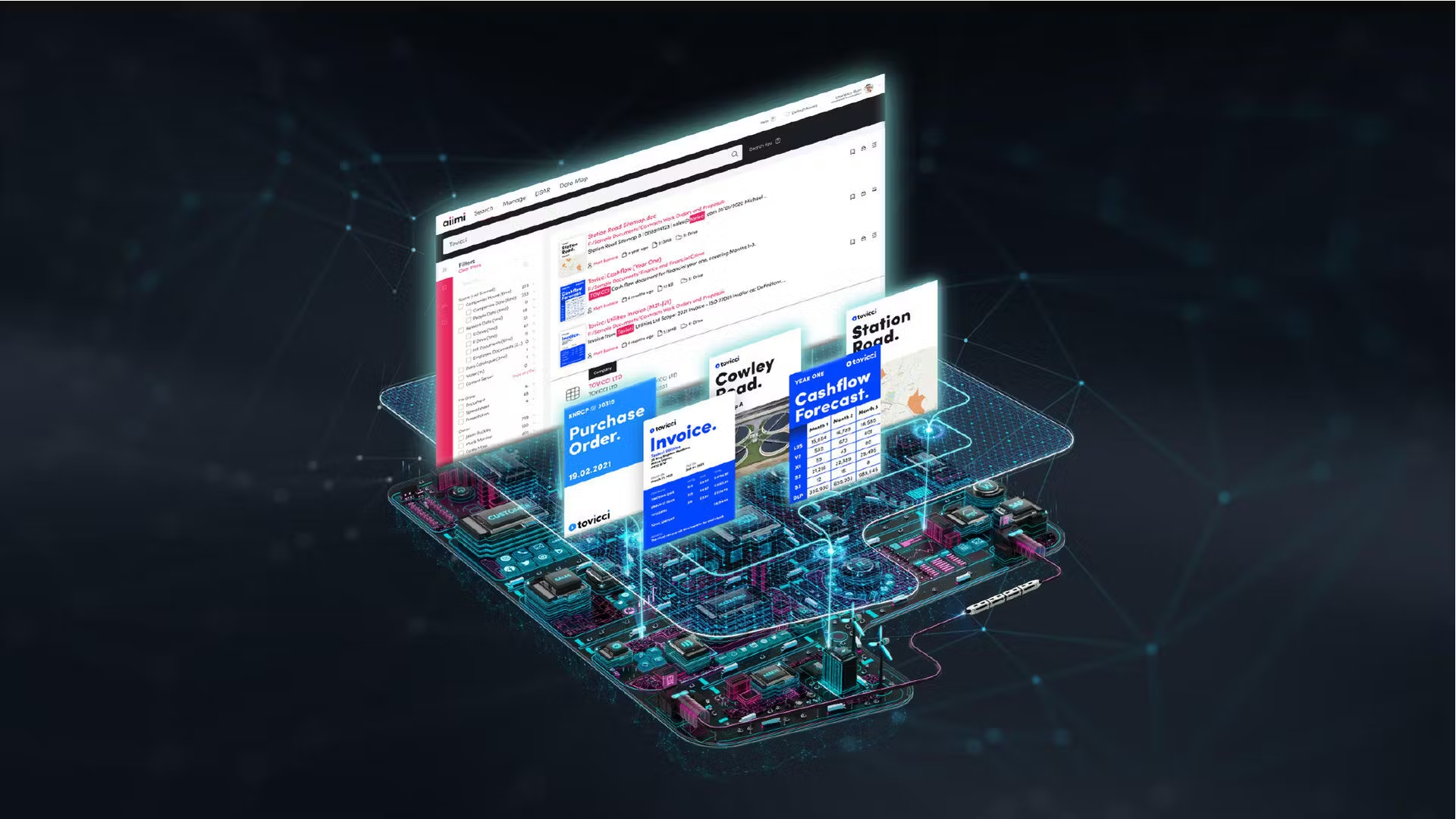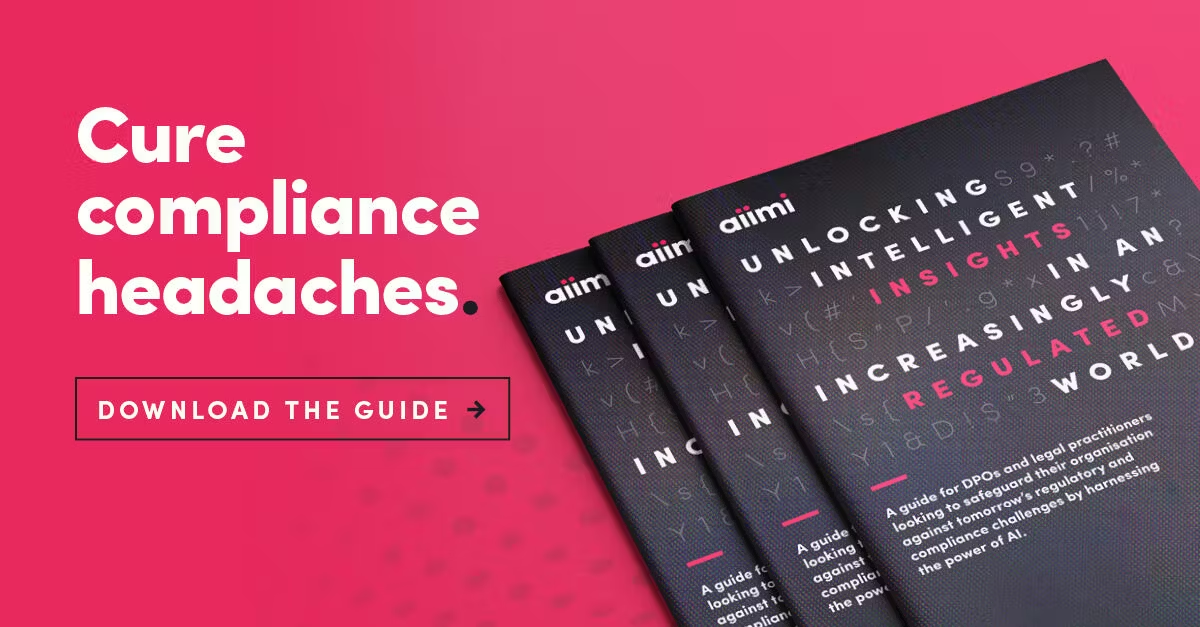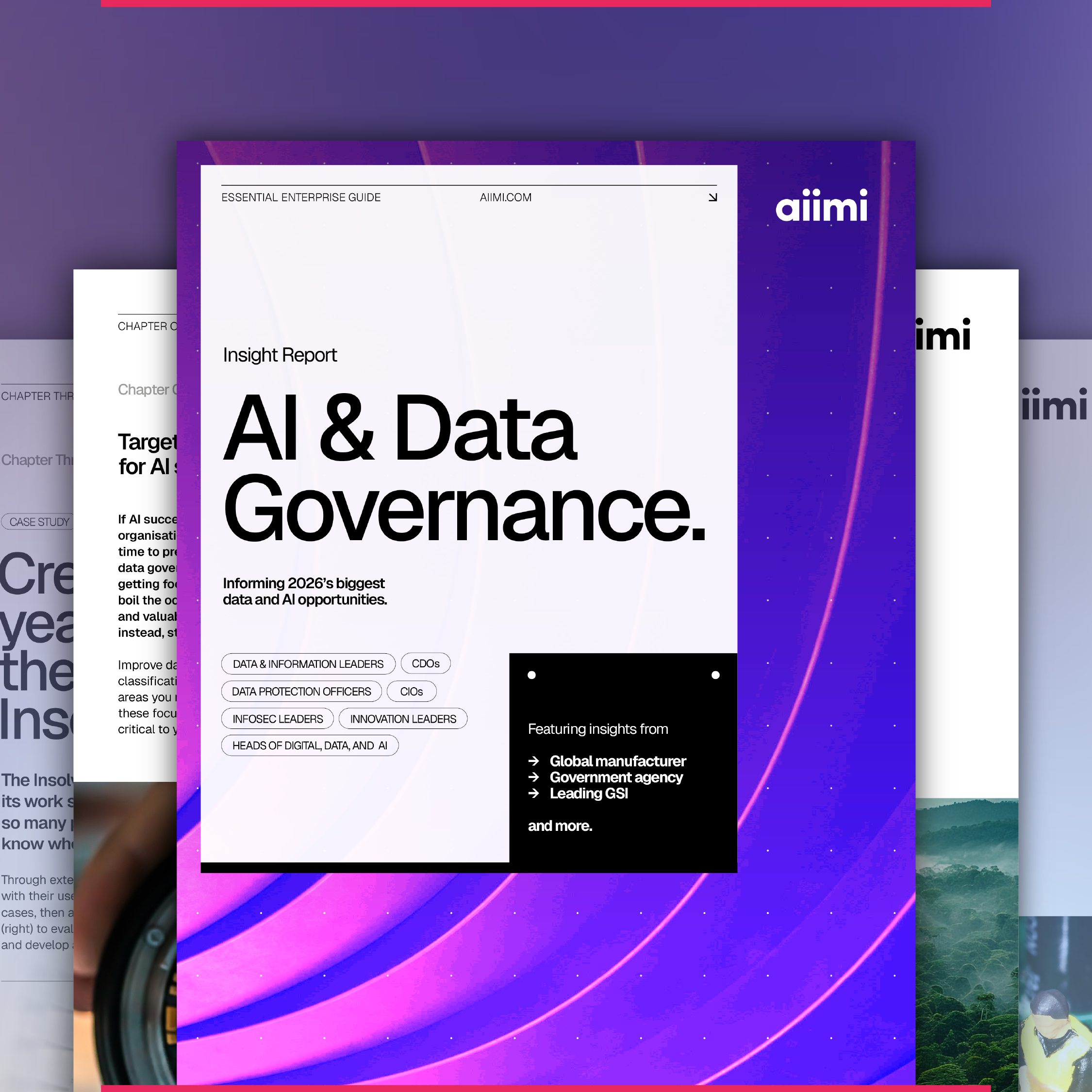How insight engines shape smarter approaches to compliance and cybersecurity

Aiimi CEO Steve Salvin explores how insight engines can shape smarter approaches to compliance and cybersecurity – even for data-driven businesses who have traditionally invested in perimeter defence.
Tackling the compliance and cybersecurity challenges of digital transformation
Rapid digitalisation is transforming our global tech-led landscape at considerable speed. With a widespread growth in data, surge in cloud adoption, sudden shift to remote working, and an opportunistic increase in cyberattacks, it’s not surprising that organisations are more concerned than ever about protecting their information from the threat of cybercriminals. Plus, on the flip side of the very same coin, new regulations are cropping up everywhere, and governing bodies are putting their foot down to enforce more stringent compliance measures.
This everchanging environment isn’t going anywhere fast – and for good reasons – but it leaves a big question mark over how best to safeguard your organisation’s valuable information and ensure compliance.
 I’d always argue that good governance practices are vital groundwork for effective compliance and cybersecurity. They ensure that (generally speaking) things are kept safely in the places you’d expect them to be. But no one can achieve a flawless record when it comes to people-led information governance – even with all the right policies and procedures in place, humans make mistakes. And cybercrime still hits hard.
I’d always argue that good governance practices are vital groundwork for effective compliance and cybersecurity. They ensure that (generally speaking) things are kept safely in the places you’d expect them to be. But no one can achieve a flawless record when it comes to people-led information governance – even with all the right policies and procedures in place, humans make mistakes. And cybercrime still hits hard.
While McKinsey highlights that many organisations will be earmarking perimeter defence as a high-priority investment to combat a growing cybersecurity threat, can this approach ever provide enough reassurance to help business leaders sleep easier when it comes to their data? I’m not so sure.
Delving deeper than the firewall
Traditionally, cybersecurity solutions are all about building a wall around your organisation. A fortress to protect valuable information, IP, and sensitive data.
These perimeter solutions are a robust and systematic way to check and control incoming and outgoing network traffic, but they can only do so much to secure the mass of information being generated inside your business. It’s one thing to create a 360-degree defence against external threats, but when you don’t know where your biggest information risks reside within that wall, including what’s inside every file or folder, how can you ensure that information gets the level of defence it needs?
 And that’s before we’ve even considered the reality of insider threats and accidents.
And that’s before we’ve even considered the reality of insider threats and accidents.
The bottom line is, if someone walked out of your organisation carrying a metaphorical briefcase full of valuable IP or sensitive information you didn’t even know you had, a perimeter defence solution alone would leave you powerless to stop them. Malicious or otherwise.
Organisations need more than just a defensive wall to protect their valuable information – but what’s the missing piece of the puzzle?
Business leaders will need to switch their perspective on cybersecurity – rather than standing atop the walls and looking out at the landscape for incoming threats, take a step back and look closer at what’s inside your organisation.
Instead of waiting for that briefcase full of unknown data to go walking out the door in the hands of a cybercriminal, malicious ex-employee, or accidental leak, it’s time to figure out what’s inside while you’ve still got the chance.
Looking inside your organisation with AI
Insight engines powered by artificial intelligence are always on hand to do just that. They continually crawl across your data to find and classify information. They’ll discover and index the entire contents of your organisation, across multiple source systems and file types, making it searchable while still respecting source-level access permissions. Most importantly, an insight engine can categorise every bit of your information and assign a risk level from low to very high, identifying whether a file should be classified as non-sensitive, or contains information that means it needs to be restricted – like top-secret IP, or sensitive personal data.
Armed with this insight, your compliance and cybersecurity teams know exactly what’s owned and where it lives at any one time.
 Plus, insight engines are equally attentive to what might be missing, misplaced, or led astray. By tracking all access to information – revealing who’s looking at what, when, and how often – an insight engine can alert compliance and cybersecurity teams to potential information governance issues (like a file saved with the wrong access permissions, or in the wrong place), before they become a real cause for alarm.
Plus, insight engines are equally attentive to what might be missing, misplaced, or led astray. By tracking all access to information – revealing who’s looking at what, when, and how often – an insight engine can alert compliance and cybersecurity teams to potential information governance issues (like a file saved with the wrong access permissions, or in the wrong place), before they become a real cause for alarm.
On the flip side, this also means highlighting the valuable, underused data that you’re needlessly harbouring under lock-and-key, so you can greenlight access to vital insight and corporate intelligence for more employees.
Insightful future-proofing to mitigate risk and data breach
Good governance and insightful, AI-powered technology are what’s needed to build a defensible position for any organisation’s data and information assets. Together, they enable your compliance and cybersecurity teams to pre-empt breaches, protect your most valuable assets, and limit the impact that cybercriminals can have on your business.
While there’s still a place for traditional perimeter defence, a strong cybersecurity approach needs to be augmented with proper information awareness. We need to be cognisant of our information landscapes – where the risks are, and where the opportunities are too. Make sure there are no more unknowns.
Regulations will change, rule books will be revised, and information will continue to grow. Insight engines will adapt to this – and that’s why they’re so invaluable.
Want to find out more about navigating the compliance landscape with insight engines? Download our latest eGuide - Unlocking intelligent insights in an increasingly regulated world.

Stay in the know with updates, articles, and events from Aiimi.
Discover more from Aiimi - we’ll keep you updated with our latest thought leadership, product news, and research reports, direct to your inbox.
You may unsubscribe from these communications at any time. For information about our commitment to protecting your information, please review our Privacy Policy.



